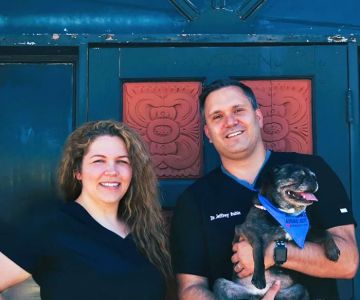How to Teach Your Dog to Walk Calmly on a Leash
As a dog owner, one of the most rewarding experiences is taking your dog for a walk. However, if your dog pulls on the leash, gets distracted, or behaves erratically, it can quickly turn into a frustrating experience. I’ve been there myself, struggling to maintain control during walks, but I’ve learned that with patience and the right training techniques, you can teach your dog to walk calmly on a leash. In this article, I’ll share my experiences and the methods that worked best for me.
1. Understanding the Basics of Leash Training
Before diving into specific techniques, it’s important to understand the fundamentals of leash training. Leash training isn’t just about controlling your dog’s behavior; it’s about building trust and a positive association with walking on a leash. Dogs are naturally curious creatures, so they often pull or tug at the leash to explore their surroundings. To address this, I focused on making the walk enjoyable for my dog while encouraging calm behavior.

43330 Junction Plaza #172, Ashburn, VA 20147, USA
See Details1.1 The Importance of Consistency
One of the first lessons I learned is the importance of consistency. Dogs thrive on routine, and consistency helps reinforce good behavior. I made sure to keep our walking schedule the same each day and used the same training methods for every walk. This routine created a sense of security and predictability for my dog, making the leash walks more manageable and less stressful.
2. Choosing the Right Equipment for Leash Training
The right equipment can make all the difference when it comes to leash training. I tried several types of collars and leashes before finding what worked best for my dog. A harness, for example, was a game-changer because it gave me more control over my dog’s movement without causing discomfort or harm. Some harnesses are designed to discourage pulling, which was helpful during the initial training stages.
2.1 The Benefits of a Front Clip Harness
I found that a front clip harness worked particularly well in curbing my dog’s pulling habit. Unlike back clip harnesses that allow dogs to pull freely, a front clip harness gently steers the dog towards me when they try to pull forward. This subtle redirection made it easier for me to guide my dog and keep them walking at a steady pace. I highly recommend this type of harness for anyone struggling with pulling dogs.
3. Positive Reinforcement and Reward-Based Training
Positive reinforcement is a powerful tool in dog training. Instead of punishing unwanted behavior, I focused on rewarding my dog for calm walking behavior. Every time my dog walked beside me without pulling, I rewarded them with praise or a small treat. Over time, they began to associate walking calmly with positive outcomes, and this helped reduce their tendency to pull.
3.1 Timing the Reward Correctly
Timing is crucial when rewarding your dog. I made sure to give the reward immediately after my dog performed the desired behavior. If I waited too long, my dog might not have understood which action was being rewarded. Immediate rewards reinforced the connection between calm walking and the positive outcome, helping my dog learn faster.
4. Teaching "Heel" and "Stop" Commands
Teaching basic commands like "heel" and "stop" was a significant part of our training process. The "heel" command, in particular, helped my dog understand that they should walk at my side rather than pulling ahead. I used treats and verbal praise to teach the command, making sure to reward my dog whenever they walked in the correct position.
4.1 The "Stop" Command for Safe Walks
Another important command I introduced was "stop." This command is crucial for safety, especially when approaching busy intersections or unfamiliar areas. Whenever I said "stop," I would gently pull on the leash to encourage my dog to stop walking. After some practice, my dog began to respond to the "stop" command without hesitation, which made walks much more manageable.
5. Dealing with Distractions During Walks
One of the biggest challenges I faced during training was dealing with distractions. Dogs are naturally curious, and everything from other dogs to passing cars can capture their attention during walks. To help my dog stay focused, I practiced walking in quieter areas where there were fewer distractions. As they got better at walking calmly, I gradually introduced more distractions, such as walking in busier neighborhoods or parks.
5.1 Maintaining Focus with Treats and Praise
During walks with distractions, I kept a few treats in my pocket to help redirect my dog’s attention when they became too distracted. I would call their name and offer a treat to bring their focus back to me. Over time, my dog learned to ignore distractions and focus on walking calmly, knowing that a reward was just around the corner for good behavior.
6. Patience and Persistence in Training
Perhaps the most important lesson I learned during this process was the need for patience and persistence. Training a dog to walk calmly on a leash doesn’t happen overnight. It takes time, effort, and consistent practice. There were times when I felt frustrated, but I reminded myself that progress, no matter how small, was still progress. Keeping a positive attitude and celebrating small successes helped both me and my dog stay motivated.
6.1 Overcoming Setbacks in Training
Even with all the hard work, there were setbacks. On some days, my dog would revert to old habits and pull on the leash again. Instead of getting discouraged, I used these moments as opportunities to reinforce the training. I stayed calm, repeated the commands, and rewarded the desired behavior. Over time, my dog’s behavior improved, and we began enjoying peaceful walks together.










